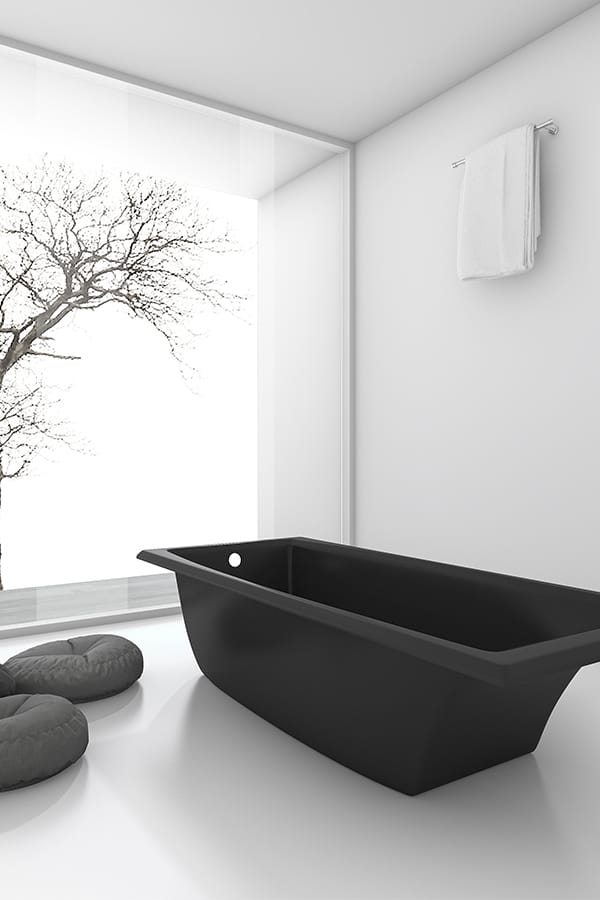Embracing minimalism in space design
Minimalism has become a popular trend in home design, offering a refreshing alternative to the cluttered, over-decorated interiors of the past. For Australians looking to simplify their lives, reduce waste, and create functional, peaceful living spaces, minimalism can be a game-changer. But beyond the aesthetic appeal, embracing minimalism in your home design can also have a significant impact on your finances, helping you save money and reduce home-related stress.

CONCEPT
What Is Minimalist Home Design?
Minimalist home design is all about creating spaces that are both beautiful and functional, while eliminating excess. It’s defined by clean lines, neutral colour palettes, and a focus on quality over quantity. In a minimalist home, every piece of furniture or décor serves a purpose, creating a calm, open environment that promotes relaxation and efficiency.
For Australians, adopting minimalism doesn’t mean giving up comfort or warmth; it’s about making intentional choices in how you design and furnish your living spaces. A minimalist home reflects a lifestyle that values experiences and well-being over material possessions.
Financial Benefits of Minimalist Home Design
1. Lower Initial Costs
When building or renovating a home with minimalism in mind, the focus shifts from accumulating décor and furnishings to investing in high-quality, multifunctional pieces. By doing so, you reduce the need for excessive purchases, lowering your overall costs. Streamlining your home design also means fewer construction materials and labour hours, which can save you thousands in building or renovation costs.
2. Reduced Maintenance Costs
A minimalist home is designed to be low-maintenance. Fewer possessions and simpler layouts make cleaning and upkeep easier and less time-consuming. This means you’ll spend less on cleaning supplies, repairs, and replacements, saving both time and money in the long run.
3. Energy Efficiency
Minimalist homes often incorporate sustainable and energy-efficient design elements, such as natural lighting, proper insulation, and energy-saving appliances. These features not only reduce your carbon footprint but also lower your energy bills, which is an increasingly important consideration for Australian homeowners given rising utility costs.
4. Increased Property Value
Minimalist homes often have broader appeal to prospective buyers due to their timeless, adaptable design. Whether you’re selling in the near future or looking for a long-term investment, a minimalist home with quality finishes and thoughtful design can fetch a higher price in the market. Australians, particularly in urban areas, are drawn to well-designed homes that feel spacious and uncluttered.
How to Embrace Minimalism in Your Home Design
1. Declutter Ruthlessly
Before you even begin redesigning your space, start by decluttering. Go through each room and get rid of items you no longer use or need. Remember, minimalism is about keeping only what serves a purpose or brings you joy.
2. Choose Functional Furniture
Opt for furniture pieces that are both stylish and functional. Multipurpose furniture, such as storage beds, extendable tables, or modular seating, helps keep your home organised without overcrowding the space. Investing in quality over quantity is key.
3. Keep Colours Neutral
A minimalist home typically features neutral colour schemes. Shades of white, grey, beige, and soft pastels can create a calm and airy atmosphere. These tones reflect natural light and make spaces feel larger, perfect for smaller Australian homes or apartments.
4. Focus on Natural Materials
Incorporate natural materials such as timber, stone, and linen into your design. These elements add warmth and texture to a minimalist space, helping avoid the cold, sterile feel that some minimalist designs can evoke.
5. Simplify Your Décor
Minimalism encourages simplicity. Rather than filling your home with décor items, choose a few statement pieces that reflect your personal style. Think of large artwork, a single sculptural vase, or a well-placed plant. These elements create visual interest without overwhelming the space.
Minimalism as a Lifestyle Choice
Adopting minimalism in home design goes hand-in-hand with a broader lifestyle change. For Australians, this might mean shifting away from consumerism and focusing more on experiences, well-being, and financial freedom. A minimalist home isn’t just about reducing clutter; it’s about creating a space that enhances your life, fosters peace, and allows you to focus on what truly matters.
By embracing minimalism, you not only create a beautiful and functional home but also free up time and money to spend on what brings you the most joy, whether that’s travel, hobbies, or simply more time with loved ones.
- Conclusion: Minimalist home design is more than just a trend – it’s a way to achieve a more intentional, stress-free lifestyle. For Australian homeowners, adopting minimalism can lead to reduced costs, increased energy efficiency, and a more sustainable way of living. By decluttering your home and focusing on quality, functional pieces, you can create a beautiful space that supports both your financial and personal well-being.
Are you ready to embrace minimalism in your home? It might just be the key to simplifying your life and achieving financial freedom.

